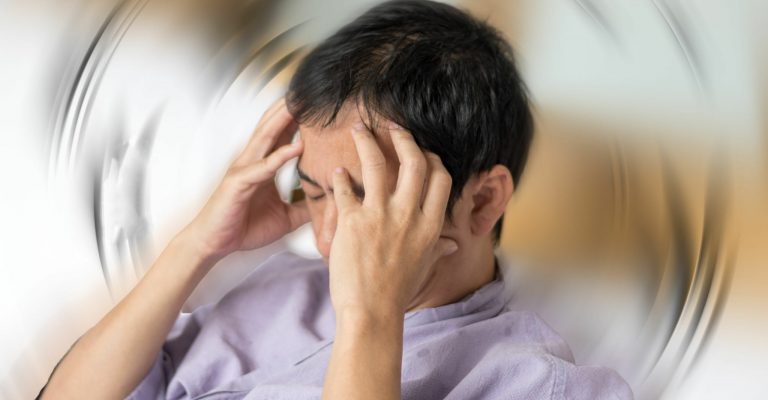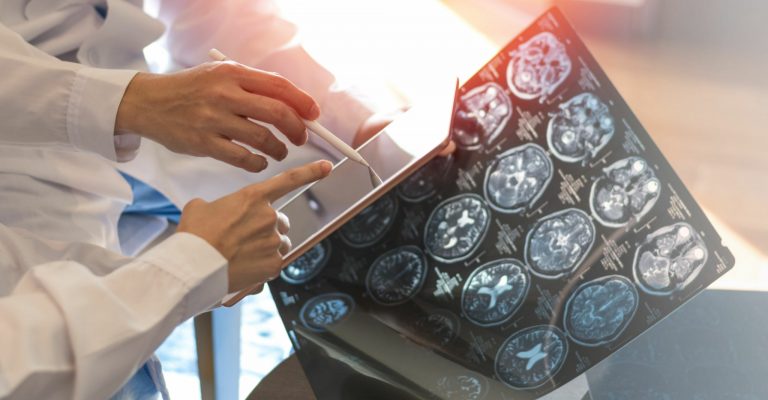The likelihood of surviving a second stroke is an issue that many people think about after suffering a stroke. Because stroke has far-reaching secondary consequences, survivors may worry more about having another stroke.
One in four people who survive a stroke will have another stroke, according to the American Stroke Association. Although this is worrisome, it should be remembered that the rates of stroke survivorship are still going up.
How Likely Is It That I Will Have Another Stroke?
The Centers for Disease Control and Prevention report that stroke affects around 795,000 people annually. One hundred eighty-five thousand of these people have a history of stroke. For many who survived, these numbers cause fear despite our awareness that survival rates are constantly increasing.
Dr. Jodi Edwards reports that the probability of having another stroke for stroke survivors is fifteen times greater than the average person within the first three months of rehabilitation. The risk decreases after an entire year, but patients still face a sevenfold increased likelihood of suffering a second stroke. This shows how important it is to take seriously the suggestions that your physician makes for reducing your risk of stroke.
Although the patient’s condition is most precarious in the first three months, the danger of a recurrence of stroke is high during the following five years of life. A great deal of worry may set in for stroke survivors as a result of this. You may lessen the likelihood of suffering a second stroke if you work to enhance your health.
Causes of Recurrence of Stroke

Second strokes remain a major concern despite the fact that stroke therapy has advanced. This is due to the fact that a stroke fighter’s day-to-day functioning is sometimes significantly impacted by a myriad of secondary consequences. Hemiplegia, hemiparesis, behavioral abnormalities, neuropathy, and impaired gait are all examples of these secondary consequences that may occur after a stroke.
This is why taking measures to avoid strokes is really necessary. Reviewing the variables that enhance the danger of stroke may help lessen the probability of having another stroke. Scientists have identified the following actions and factors as potential dangers:
Timely Recognition and Response
Swift recognition of stroke symptoms and immediate response play a pivotal role in survival. Recognizing signs such as sudden numbness, confusion, difficulty speaking, or severe headache prompts timely medical attention, reducing the risk of severe damage during a second stroke.
Rehabilitation and Recovery from Initial Stroke
The aftermath of the first stroke significantly influences the chances of surviving a second one. Engaging in post-stroke rehabilitation programs enhances physical and cognitive recovery, minimizing vulnerability to subsequent strokes. Consistent rehabilitation efforts can contribute to overall health improvement and stroke prevention.
Medication Adherence
Strict adherence to prescribed medications is crucial in managing underlying conditions like hypertension, diabetes, or high cholesterol, which are primary contributors to stroke risk. Non-compliance increases vulnerability to subsequent strokes, emphasizing the importance of maintaining a consistent medication regimen.
Lifestyle Modifications
Adopting a healthy lifestyle is a cornerstone in preventing second strokes. This includes maintaining a balanced diet, regular exercise, and avoiding tobacco and excessive alcohol consumption. Healthy lifestyle choices contribute not only to overall well-being but also act as formidable defenses against recurrent strokes.
Blood Pressure Control
Effective blood pressure management is paramount in reducing the risk of second strokes. Regular monitoring and adherence to prescribed medications assist in maintaining optimal blood pressure levels, mitigating the potential for further cerebrovascular events.
Diabetes Management
For individuals with diabetes, meticulous blood sugar control is imperative. Uncontrolled diabetes significantly heightens the risk of recurrent strokes. Regular monitoring, medication adherence, and lifestyle adjustments are integral to effective diabetes management.
Secondary Stroke Prevention Medications
Prescribed secondary stroke prevention medications, such as antiplatelet agents or anticoagulants, play a vital role in minimizing the likelihood of subsequent strokes. Compliance with these medications is essential to prevent blood clot formation and reduce the risk of recurrent cerebrovascular incidents.
Ongoing Medical Supervision
Regular medical check-ups and ongoing supervision by healthcare professionals contribute to the early detection of potential risk factors and effective management. Continuous monitoring allows for prompt adjustments to treatment plans, optimizing the chances of second stroke prevention.
Social Support and Mental Health
Emotional well-being and social support are often underestimated factors in second-stroke survival. Maintaining positive mental health and having a robust support system can aid in coping with the challenges of recovery and promoting adherence to medical recommendations and lifestyle modifications.
Age and Overall Health
Age and general health conditions influence second stroke survival rates. Older individuals may face additional challenges in recovery, making comprehensive healthcare strategies and support systems essential in improving outcomes.

How to Prevent a Second Stroke?
Listed below are some practical steps you may take to lessen your risk of suffering a second stroke:
Check Your Blood Pressure Regularly
The risk of stroke may be significantly reduced by taking measures to manage hypertension. As a result, those who have had a stroke should keep an eye on their blood pressure while at home with the use of a simple, inexpensive cuff.
You and your physician will be able to detect trends in your health metrics if you record your blood pressure level. If any adjustments to your prescriptions are necessary, this might assist your healthcare provider in making that determination.
You must adhere to your doctor’s prescription regimen. Avoid low blood pressure by taking your medicine exactly as prescribed and making sure you stock up on one month’s worth of medicines in advance. Do not risk a second stroke by neglecting to take your blood pressure medicine as prescribed.
Get Enough Sleep
The change of one’s circadian cycle and everyday life following a stroke causes many survivors to suffer from sleep difficulties. Lack of sleep increases the chance of recurrent stroke symptoms such as increased daytime drowsiness and post-stroke exhaustion.
Nearly half of stroke patients will have some kind of sleep problem. Damage to mental abilities and an increased risk of future strokes may result from this.
Make it a priority to establish routines that will help you get a better night’s sleep every night, and you’ll lower your chance of having a second stroke. Maintaining a regular nighttime schedule, making your bedroom dark and soothing, and reducing caffeine intake in the hours leading up to bed are all good ways to regulate your sleep. You may enhance the quality of your sleep by exercising every day and cutting down on your screen time.
Overcome Anxiety
A lot of people experience anxiety after a stroke. According to recent data, over 25% of those who have suffered a stroke will have anxiety during their initial five years after the event. However, persistent worry raises blood pressure and puts you in greater danger of having another stroke.
Stroke survivors may often feel a range of emotions, including fear, sadness, and disappointment. It’s crucial to know how to cope with these emotions. Here are a few ways to alleviate the worry that often follows a stroke:
- Consistent physical training
- Keeping alcohol and caffeine intake low
- Calming the mind and breathing deeply
- Emotional therapy
Get NewGait Updates Straight to Your Inbox!
Give up Smoking
It’s important to quit smoking if you want to reduce your risk of stroke. Cigarettes are filled with over 7,000 chemicals, many of which are harmful to your health. Two of the most dangerous chemicals found in cigarettes are carbon monoxide and nicotine. When you take a puff of a cigarette, these chemicals quickly enter your bloodstream.
Carbon monoxide is particularly dangerous because it reduces the amount of oxygen in your blood. This forces your heart to pump faster in order to deliver oxygen to the rest of your body. When your heart is working harder, your blood pressure goes up. High blood pressure is a major risk factor for stroke.
But that’s not all. The chemicals in cigarette smoke can also make your blood platelets stick together more easily. When your platelets stick together, they can create blood clots. Blood clots can block blood vessels in your brain, causing a stroke. Studies have shown that people who smoke are two to four times more likely to have a stroke than nonsmokers.
Perform Cardiovascular Workouts
Regular exercise may reduce the chance of a stroke recurrence and boost general health. When you work out regularly, your heart grows stronger and needs less energy to pump blood. Because of the reduced pressure on the blood vessels, you will have a decreased chance of suffering a second stroke.
Stroke survivors are encouraged to get fit to lower their chance of having another stroke, according to the latest instructions put forth by the American Stroke Association. Regular aerobic exercise—either 10 minutes of mild exertion five times weekly or 20 minutes of strong intensity twice weekly—is recommended by the American Society of Sports Medicine (ASA).
Take Away
Keeping up with your routine is crucial to reducing the risk of experiencing another stroke. Understandably, the process can be daunting, but with the help of your doctor or therapy team, it can be much more manageable and less overwhelming.
Adopting and maintaining healthy habits is key to avoiding future strokes. These fresh habits can improve the quality of life and increase the chances of a successful recovery.
Everyone’s recovery process is different and unique. Therefore, it’s essential to tailor your routines and habits to suit your individual needs and preferences. You can significantly reduce the risk of another stroke by making small changes to your daily routine, such as incorporating regular exercise and healthier eating habits.


